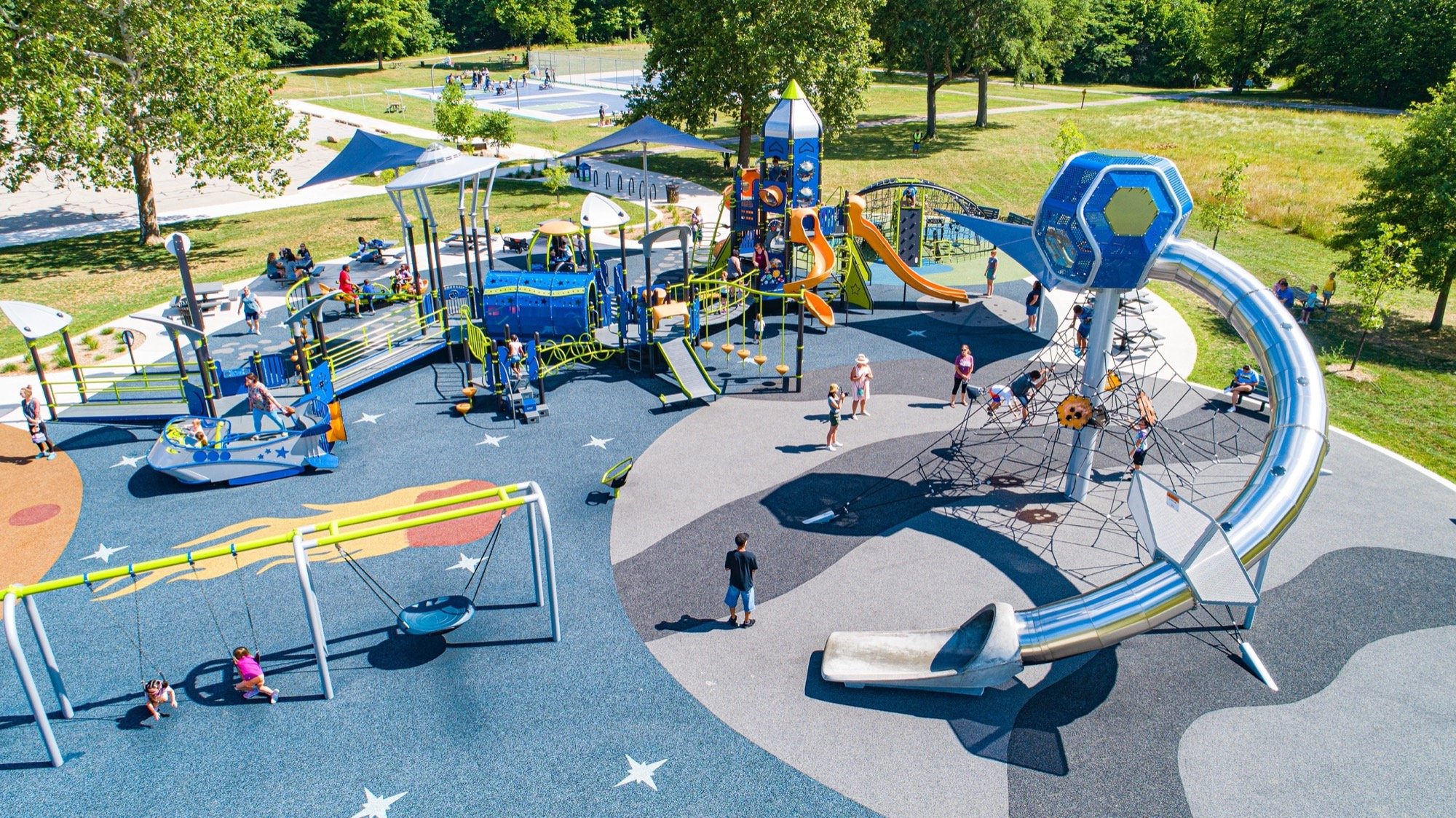The Role of Color in Playground Design: Enhancing Visual Appeal and Creativity
Playgrounds are more than just spaces for children to burn off energy, they are crucial environments for fostering creativity, social interaction, and overall development. However, one often underestimated element that plays a significant role in shaping these experiences is color.
The thoughtful use of color in playground design goes beyond mere aesthetics. It has the power to enhance visual appeal and stimulate creativity among children.
- Visual Appeal
Color has a profound impact on our emotions and perceptions. In the context of playgrounds, vibrant and contrasting colors can create a visually stimulating environment. Bright hues like red, yellow, and blue not only catch the eye but also evoke a sense of excitement and energy. On the other hand, softer tones like greens and pastels can instill a sense of calm and tranquility.
The layout of colors within a playground is equally crucial. A well-balanced color palette can contribute to the overall coherence of the space. For instance, using complementary colors in adjacent play structures or creating color zones can help organize the playground visually, making it more inviting for children.
- Creativity Stimulation
Children are naturally drawn to colors, and incorporating a diverse range of colors in playground design can foster creativity. Colorful surroundings provide a canvas for imaginative play, encouraging children to invent stories, games, and scenarios.
Moreover, color-coded elements can serve as educational tools. For instance, using different colors to designate various play areas or activity zones helps children develop cognitive skills by associating colors with specific functions. This intentional use of color aids in creating a more enriching play experience.
- Inclusive Design
Consideration for inclusivity is vital in playground design, and color can play a role in making spaces more accessible. For children with visual impairments, incorporating high-contrast colors or textures can provide cues and enhance the overall experience. This inclusive approach ensures that the playground is enjoyable and safe for all children, regardless of their abilities.
- Safety Considerations
While the aesthetic aspect of color is essential, safety is paramount in playground design. Using contrasting colors on equipment and surfaces can improve visibility, reducing the risk of accidents.
- Community Engagement
Colorful playgrounds not only benefit children but also contribute to community engagement. A well-designed and visually appealing playground can become a focal point for families, encouraging social interaction and community bonding.
In this way, the role of color in playground design extends far beyond the surface. It enhances creativity, promotes inclusivity, ensures safety, and foster community engagement.
This is where Inspire Play outdoor playgrounds aim to create engaging and inclusive spaces for children to thrive.








